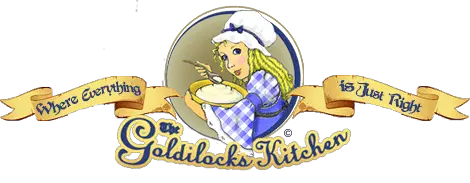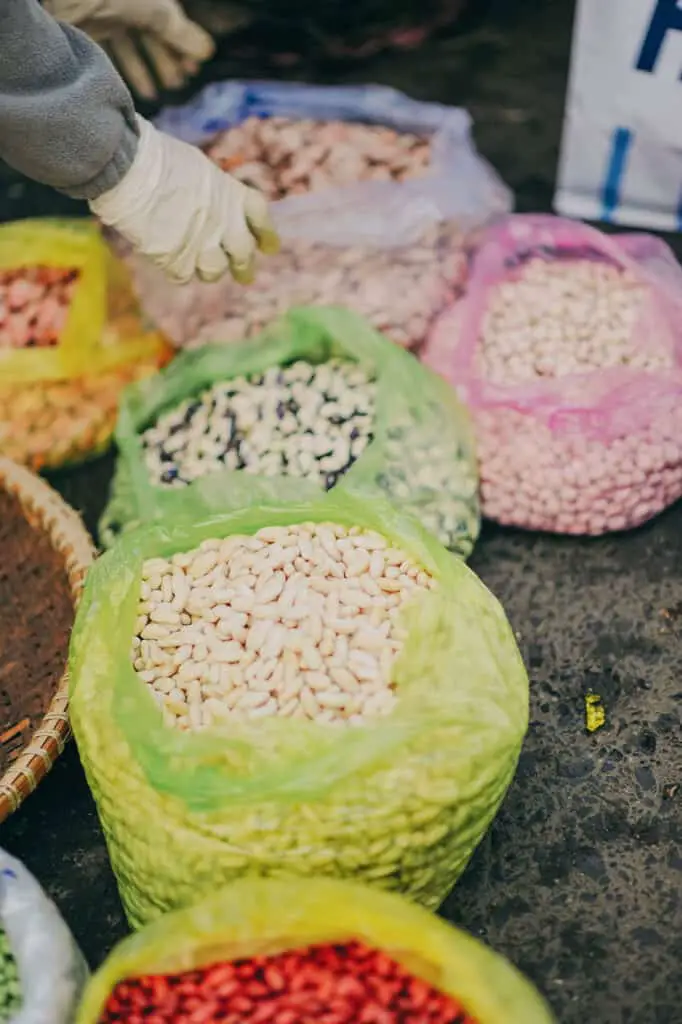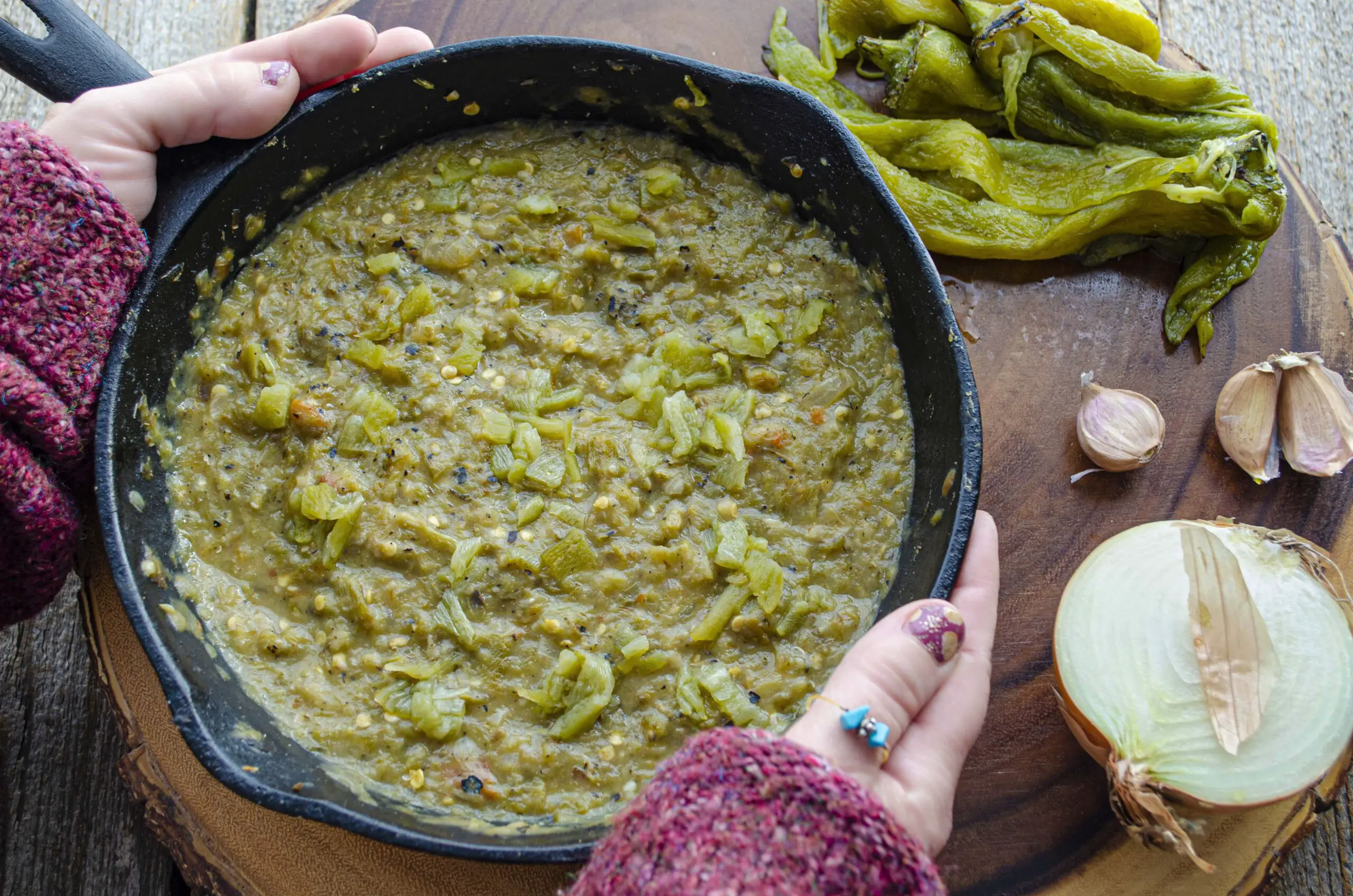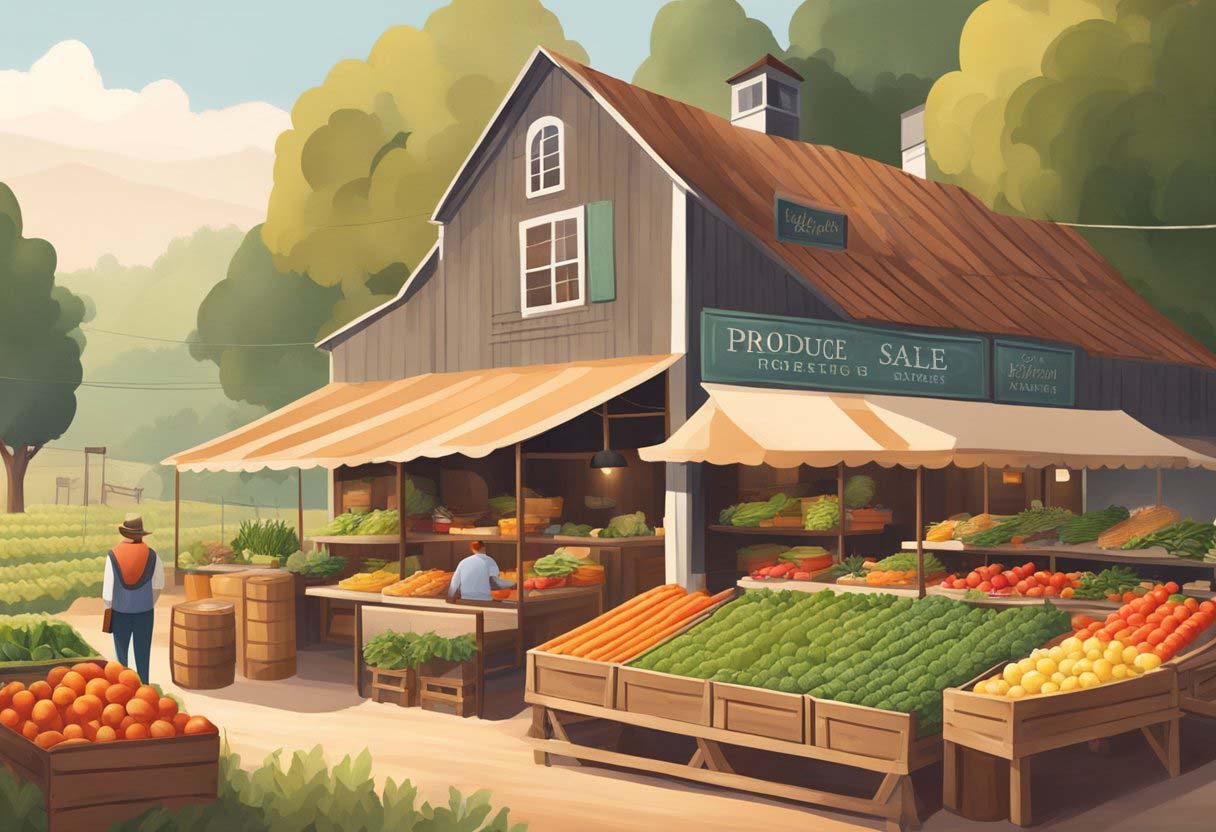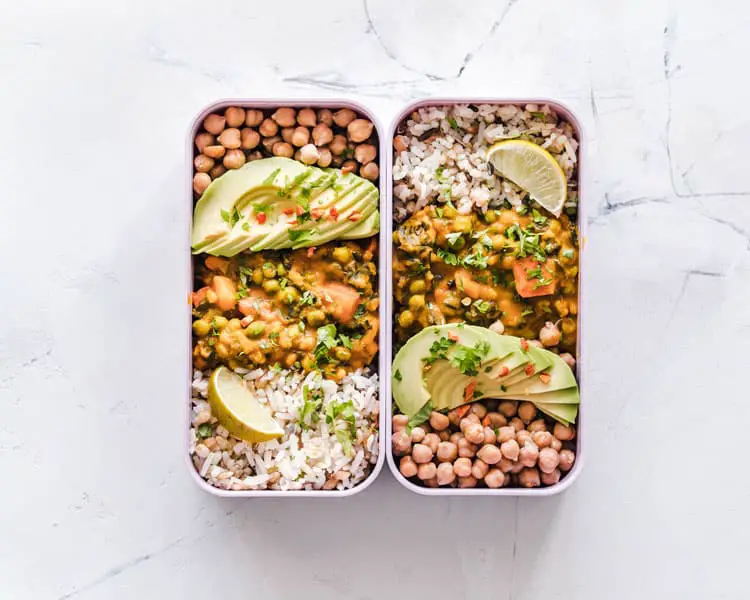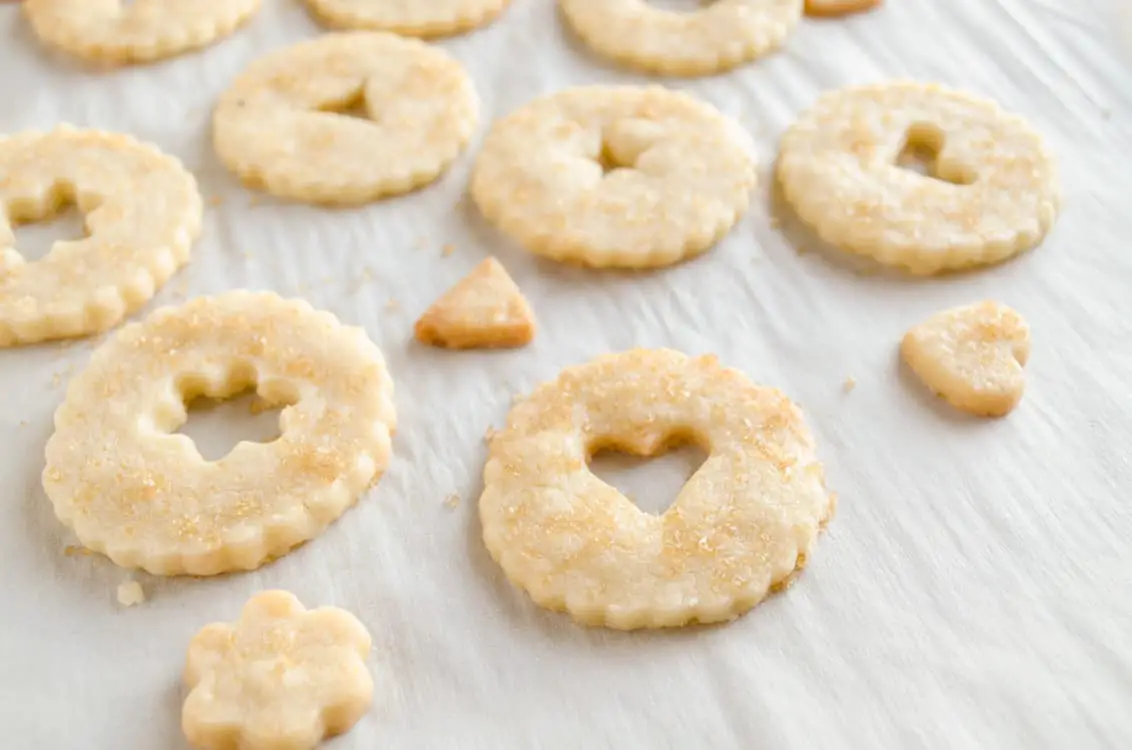What is the Cheapest Most Filling Food?
This post contains Amazon affiliate links- meaning that if readers purchase items thru links on this page I may receive a small sales commission.
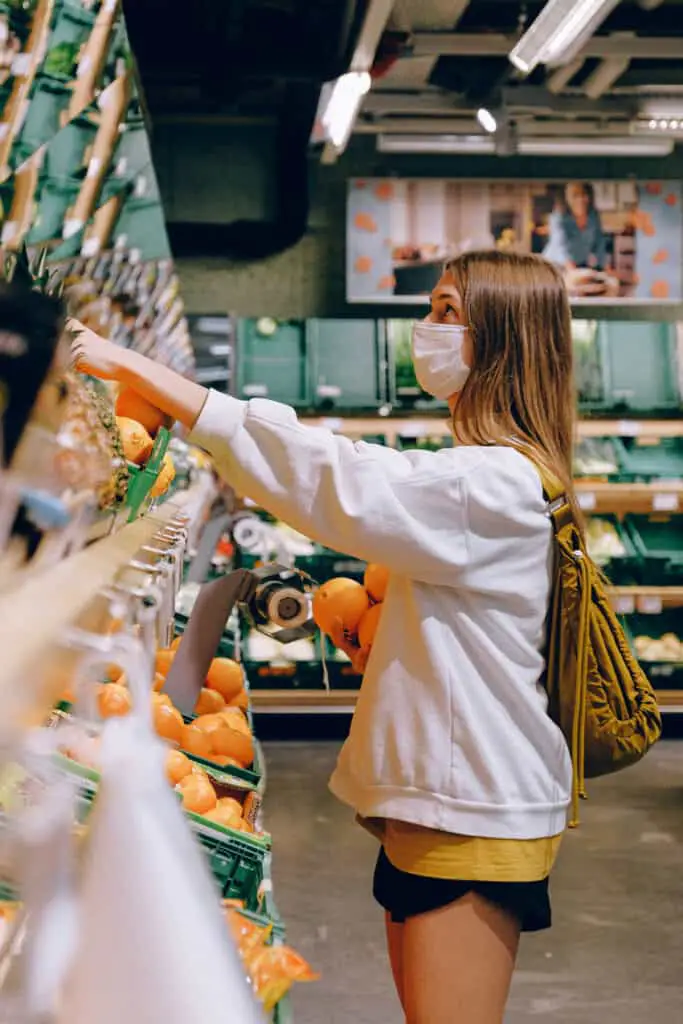
The vast majority of us, at some point in life (myself included) have found ourselves having to stretch our dollars much, MUCH farther than they should go at the grocery store.
I should know- when I started The Goldilocks Kitchen eight years ago, I admit I was on food stamps. Thankfully I’m not anymore, but if you’re going through it now, I’m here to help by answering the question above. I’m certainly NOT encouraging anyone to eat just one food all the time. That is unhealthy! But just for the sake of our skinny wallets, what exactly is the cheapest most filling food?
The cheapest most filling food is dry beans because they offer the highest amount of fiber at an average of only 0.52 cents a serving in the United States. That price goes down even further when dry beans are purchased in bulk. From Fava beans (9 grams per 1 cup) to Navy beans and White beans (19 grams per 1 cup) you get the most bang for your buck with beans if you need to purchase a nutritious and filling food at the lowest cost possible.
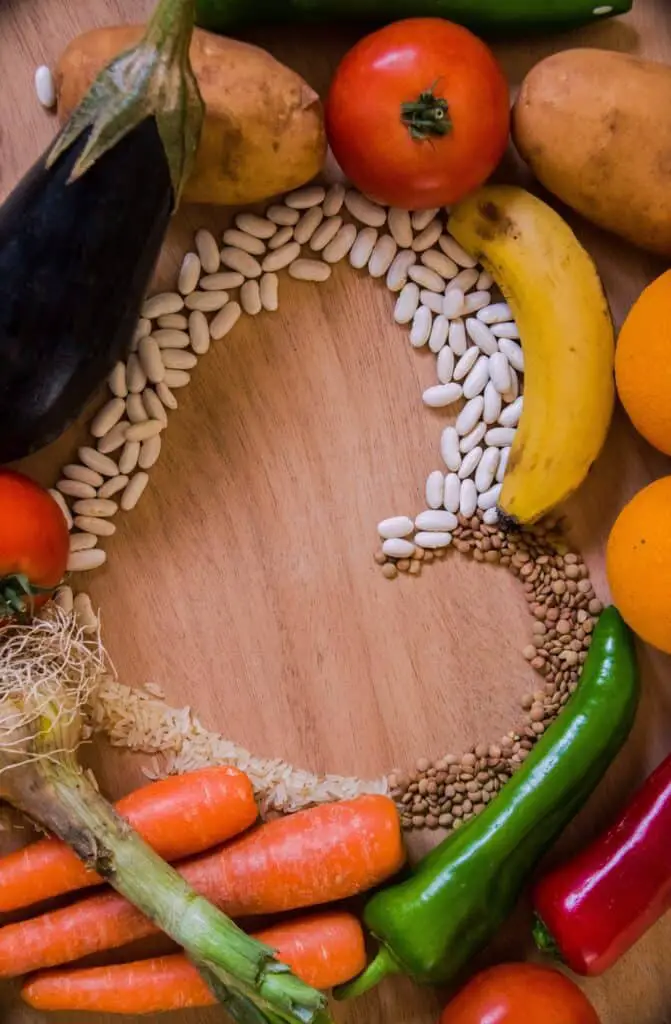
I spoke with Susan Clark, a Registered Dietitian currently working at Madison Memorial Hospital in Idaho, and she agrees. She said:
“It has to be beans. Many populations around the world use beans as a primary food source because they are healthy and affordable.”
Susan clark, MS, RDN, LDN, CDCES
I came up with the average of 0.52 cents per one cup of cooked beans in America by shopping the ten largest grocery store chains in the U.S. (per FoodIndustry.com). You can see my results in the chart below from each grocery store, and which store over all was the cheapest! You can also see how potatoes and rice (which are also cheap) would compare to dry beans by cost and amount of fiber so I include them in the chart as well.
PLUS, I’ve included a BONUS delicious and simple recipe below for cooking up a tasty pot of Mexican style beans- a recipe I make myself all the time and the whole fam loves.
Why are beans so healthy?
Ok so all jokes about “magical fruit” aside, what is so special about beans anyway? Well quite frankly, they just might be a magical fruit because of how amazing these little packages of nutrition really are. Clark elaborates:
Beans are high in fiber and protein. They stay with you longer and help you not get hungry as quickly. This is great for people that are trying to lose weight and people that don’t have a large food budget. They are versatile and can be used in many different ways. Dried beans are cheapest but other types of beans are usually inexpensive, as well.
Susan Clark MS, RDN, LDN, CDCES
Madison Memorial Hospital
According to MedlinePlus.gov, “Beans and legumes are rich in plant protein, fiber, B-vitamins, iron, folate, calcium, potassium, phosphorus, and zinc. Most beans are also low in fat. Legumes are similar to meat in nutrients, but with lower iron levels and no saturated fats.“
Beans have been eaten by people for THOUSANDS of years- some evidence has been found that beans were domesticated and cultivated before wheat was!
Dry beans are also great for food storage as well. They can last up to…well… kinda forever. They’ll keep for at least two years if you store them in a cool, dry, clean place. They’re considered ‘Non perishable’ IF you seal them in a vacuum pack with an oxygen absorber. Archeologists find beans preserved from ancient civilizations all the time that are thousands of years old. Really??? Really.
What helps food to be “filling”?
Fiber is what helps us humans feel full because our stomachs have to work longer to try to break down and digest it. Fiber can have many health benefits besides just helping us feel full. This is where the two types of fiber, soluble and insoluble come in to play in our gut.
Some of the fiber we eat isn’t digested, because its insoluble, meaning it doesn’t dissolve in liquids. So it passes through our digestive systems pretty much intact; helping to soften our stools and clean out our intestines like a toothbrush (as my son’s P.E. teacher pointed out to him one day).
Soluble is the other type of fiber. Most foods have some amount of both types of fiber. Soluble fiber is the kind that does dissolve in liquids, including our stomachs. Soluble fiber provides food for healthy bacteria in our gut to eat. Each one has unique benefits that you can go down the rabbit whole researching here.
So where do Potatoes and Rice rank against beans?
I found that a serving of brown rice, which has a fiber content of 4 grams per 1 cup serving, was only 0.14 cents per a 1 cup serving. I arrived at that number by dividing the amount of servings per rice in a 1 pound bag (which cooks up to about 8 cups). That makes it the cheapest food, BUT not the most filling compared to beans.
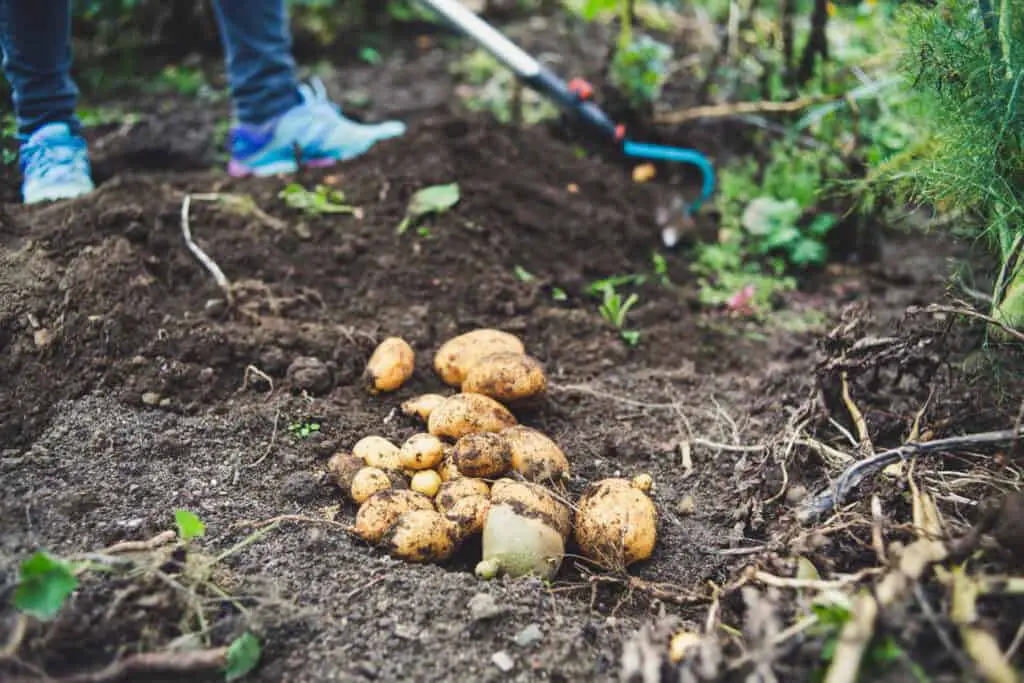
The humble potato has more fiber content, 4.7 grams on average for one medium potato, and I assume that a hungry person would want to eat two medium potatoes. So that would average out to 9.4 grams of fiber. That’s a decent amount of fiber BUT- much of the potato’s fiber is contained in the SKIN ( just FYI). In the chart below, you’ll see that Russet potatoes averaged out to 0.58 cents per two medium potato serving (or about 1 pound).
Of course there will be sales, and the prices for each of these goes down when purchased in bulk. However, I wanted to create a uniform comparison chart of each store and prices for uniform products. I’ve organized the chart from cheapest to most expensive when it comes to beans.
| Grocery Store | Dry Pinto Beans (1lbs bag) | Russet Potatoes (1 lbs) | Brown Rice (1 lbs bag) | |||
| Aldi | $0.98 | $0.53 | $1.85 | |||
| Walmart | $1.00 | $0.40 | $0.78 | |||
| Food Lion | $1.18 | $0.60 | $0.79 | |||
| Smiths | $1.29 | $0.36 | $0.99 | |||
| Kroger | $1.29 | $0.46 | $0.79 | |||
| Meijer | $1.29 | $0.50 | $1.19 | |||
| ShopRite | $1.59 | $0.60 | $0.79 | |||
| Albertsons’s | $1.79 | $0.54 | $0.99 | |||
| Publix | $2.01 | $1.10 | $1.21 | |||
| Whole Foods | $3.19 | $0.70 | $2.00 | |||
| Averages | $1.56 | $0.58 | $1.13 |
$1.56 divided by 6 servings = 0.52 cents per serving of beans
$1.13 divided by 8 servings = 0.14 cents per serving of rice
Again, the one pound bags of beans and rice I divided into servings; about 6 servings for a 1 lbs bag of beans (after they are cooked), and 8 servings for a bag of rice (also after being cooked). Even though they weigh the same, one (1lbs) bag of rice will cook up to be about 7.5 to – 8 cups cooked rice, and one (1 lbs) bag of pinto beans will cook up to about 6 cups cooked beans. The potatoes need no division, two medium potatoes or one large potato equal about one pound, which equals about one hearty meal for someone. So the average cost of potatoes per serving is 0.58
How to make beans easier to digest
There are many options out there for helping your gut tolerate eating beans.
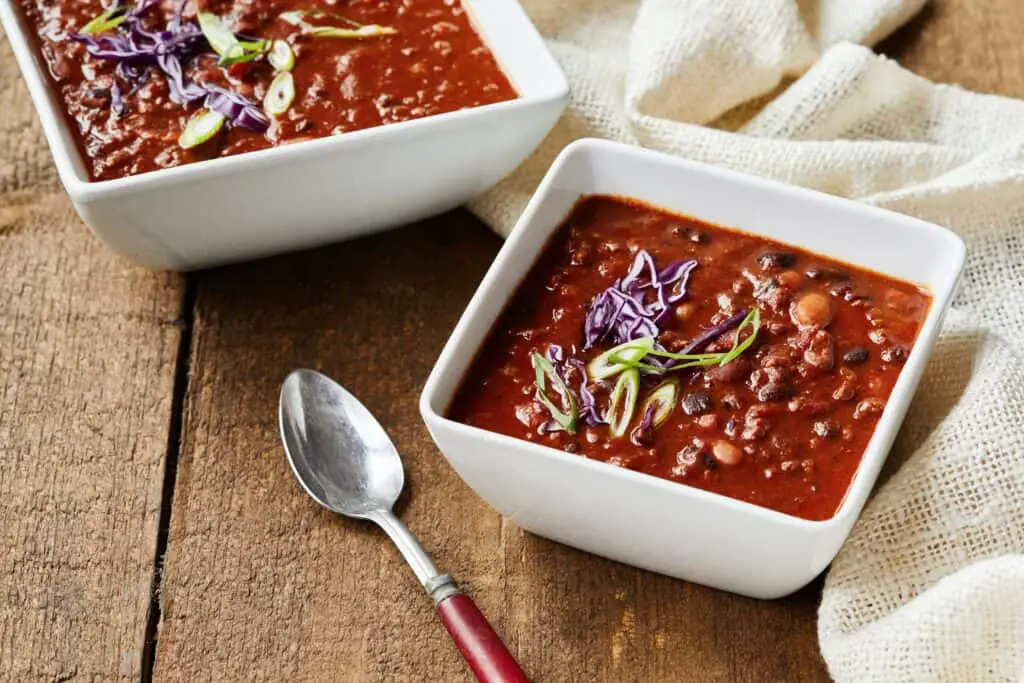
The first thing to do is soak your dry beans overnight. Dry beans take a LONG time to cook properly, and soaking them overnight really helps them to cook down to a creamy soft texture and cut down on the “musicalness” you may experience after enjoying them.
Another option is just grab a bottle of Beano. My mom always used it when she would put a pot of dry beans on the stove to cook. We never had any digestive problems :0)
The third option I’ve also used is to include a central American Herb called “Epazote” in my pot of beans. It’s pungent flavor mellows as it cooks and it imparts a mildly bright flavor. It ALSO has some special property that helps us humans digest beans, so it’s purpose is really two fold. I stir in one tablespoon of freshly chopped or one teaspoon of dried epazote.
The fourth option is to just take it slow; i.e. gradually build up a tolerance by eating just a few beans at first, then increasing your intake slowly. You CAN actually teach your gut to tolerate beans if you do it gradually. Nutritionist Clark explains:
Beans contain oligosaccharides. This is a type of carbohydrate that isn’t digested by human enzymes. Instead our healthy bacteria in the large intestine ferment them – this is what can cause gas. Building up a good supply of healthy bacteria in your gut can help you tolerate beans better. Getting more prebiotics (food sources for your good bacteria – beans, garlic, onions, bananas, oats and apples are examples) and probiotics (foods with the actual bacteria in them – yogurt, kefir, kombucha, tempeh, sauerkraut, kimchi, miso soup are examples) can help build a healthy gut bacteria population.
Susan Clark MS, RDN, LDN, CDCES
Madison Memorial Hospital
So having a healthy gut means having healthy bacteria inside. Beans are a good source of prebiotics that probiotic or healthy bacteria can feed off of. Remember earlier reading about soluble and insoluble fiber? Beans are a good source of both kinds of fiber. Now that I know exactly WHAT the difference is between probiotic and prebiotic, I am definitely going to start keeping that in mind when making my food choices!
Well then, lets get down to it and enjoy ourselves a fantastically tasty and healthy pot of beans.
You know what else is fantastic? Simply giving this recipe a star rating and a comment below! Your comments and ratings are greatly appreciated by me AND the Google algorithm. Thank you!
Did you know I have a full-color cookbook with lots more easy and delicious New Mexican recipes? You can learn more about it here!
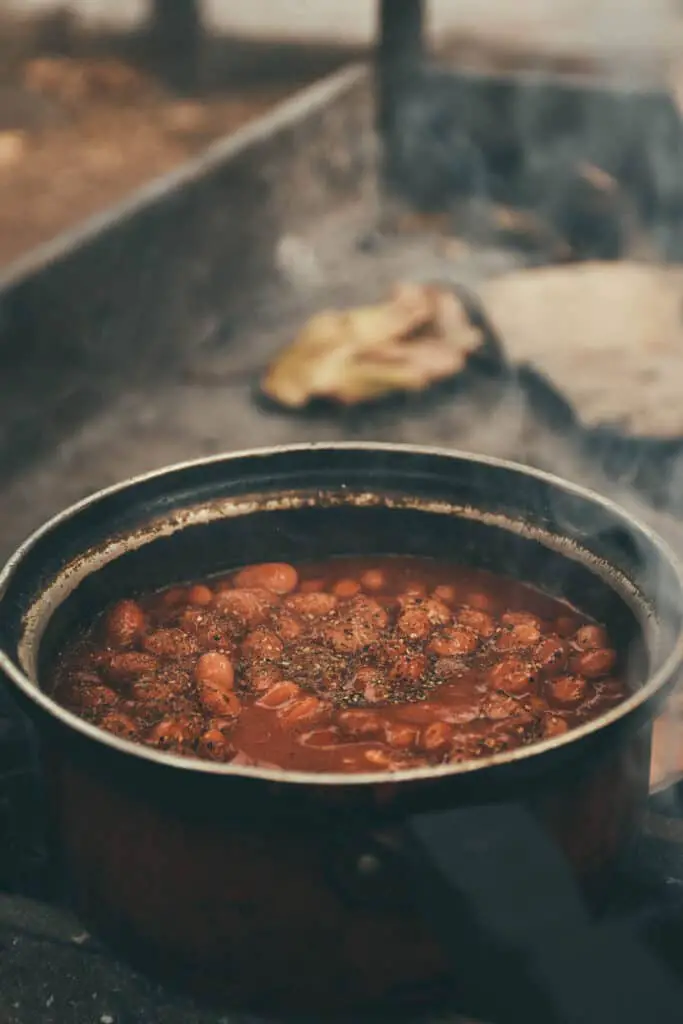
Also check out this recipe for Black Bean Sweet Potato Enchiladas, and The Best Darn Baked Beans Ever.
Print
Seasoned Pinto Beans
Description
Deliciously well-seasoned pinto beans slow-simmered for hours; these beans make the perfect side dish to accompany any Southwestern meal.
Support The Goldilocks Kitchen by simply giving this recipe a comment and star rating in the comments section below; your comments and ratings are greatly appreciated by me AND the Google algorithm. Thanks for your support!
Ingredients
- 2 cups of dry pinto beans, picked over for small stones
- 2 tablespoons vegetable oil
- 1 and 1/4 cup diced sweet yellow onion
- 1 tablespoon minced garlic
- 4 cups chicken broth
- 1 bay leaf
- 1 and 1/2 teaspoons dried Mexican oregano
- 1 teaspoon dried epazote (optional)
- 1/2 teaspoon ground cumin
- 1/2 teaspoon ground coriander
- 1/2 teaspoon chipotle chile powder
- 1 teaspoon salt or more to taste
Instructions
- Place soaked beans into a large stockpot and cover with at least 3 inches of water. Bring to a boil, then reduce the heat and slow-simmer the beans (barely boiling) for 2 to 3 hours, or until the beans have softened. Remove from heat. Drain and rinse well with water, leaving the beans in the colander.
- Set the stockpot you used to cook the beans over medium-high heat and add in the oil. Add the onions to the pot. Stir frequently until onion is soft and beginning to brown. Add the garlic and cook for one minute.
- Add the beans, broth, bay leaf, oregano, epazote, cumin, coriander, and chipotle powder to the pot. Bring to a boil, then reduce heat to a slow-simmer and cook for about 1 hour, covered, stirring frequently. If the beans don’t have enough liquid to stir easily, add a little water.
- After 1 hour, stir in the salt and slow-simmer again for about 10 minutes. The beans should be nice and creamy. Serve warm with your main entrée.
Notes
Dry beans really should be soaked overnight in water before cooking them the next day. This helps to dilute an enzyme within the raw beans that can cause stomach upset, along with helping to soften the beans. If you skip this step you’ll be sorry (unless you can cheat and place them in a pressure cooker). Drain and rinse off the beans the next morning before beginning with this recipe.
Do not add any salt to the beans or the soaking liquids at all, until called for in the recipe. If you would like to add ham or bacon, add these in when adding the onion in step 2.
